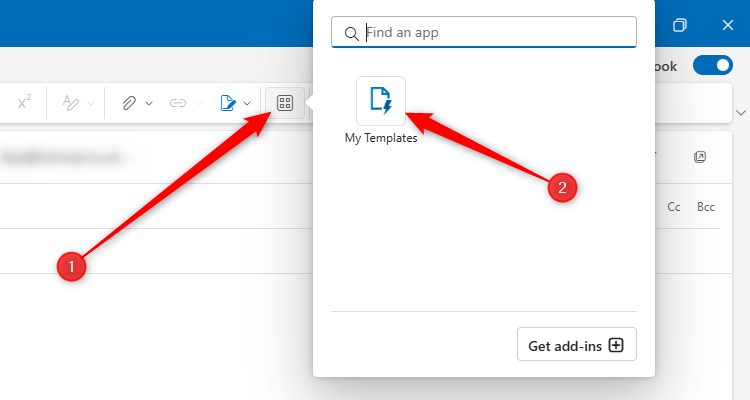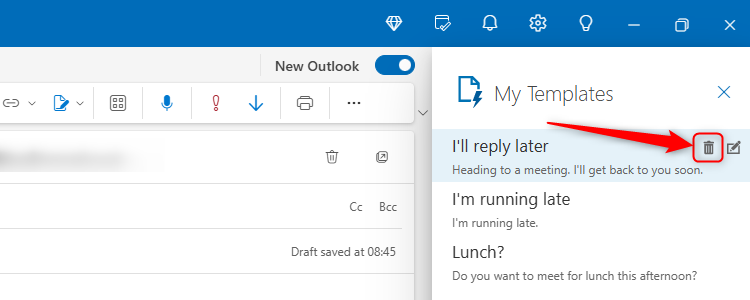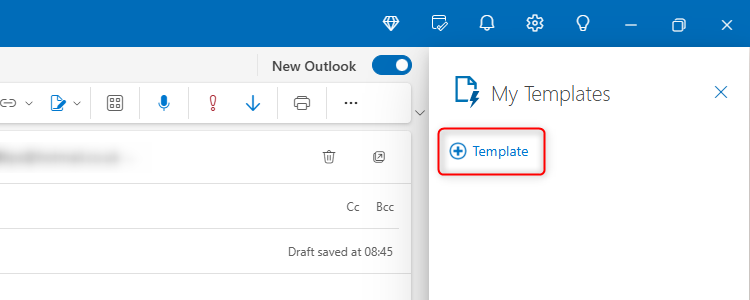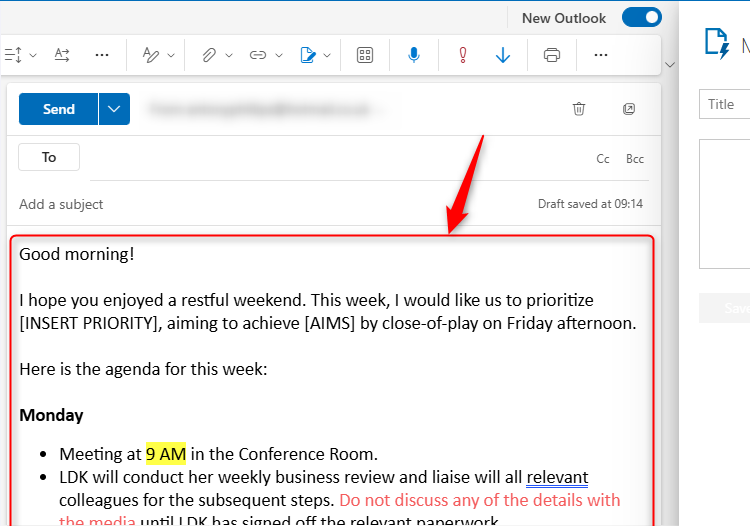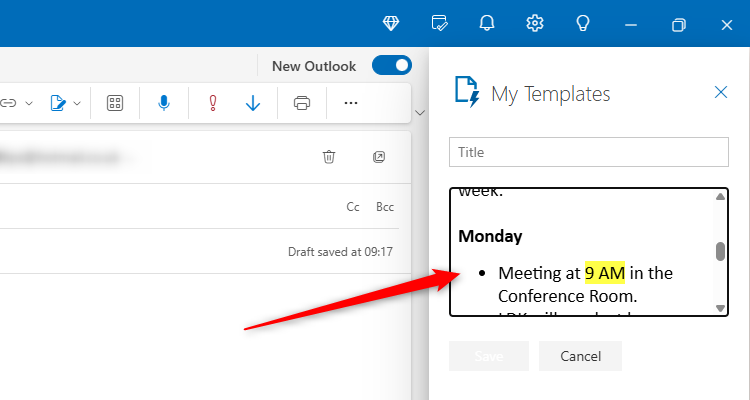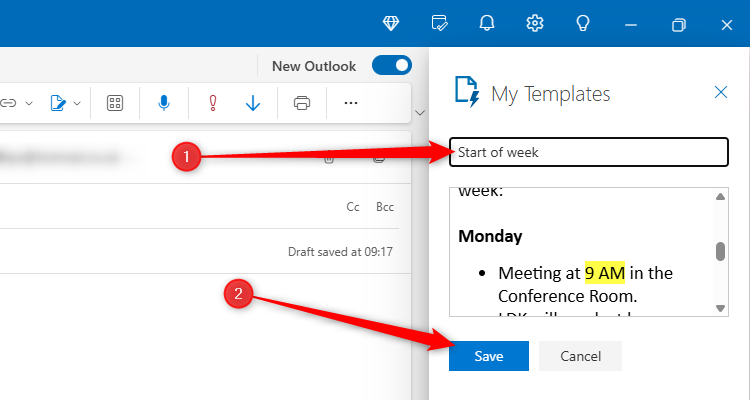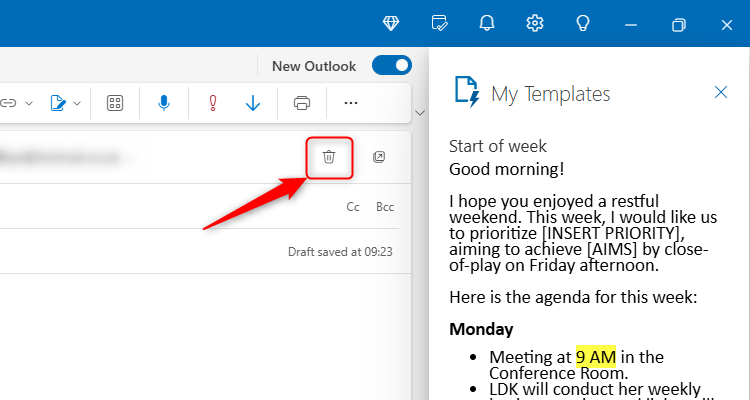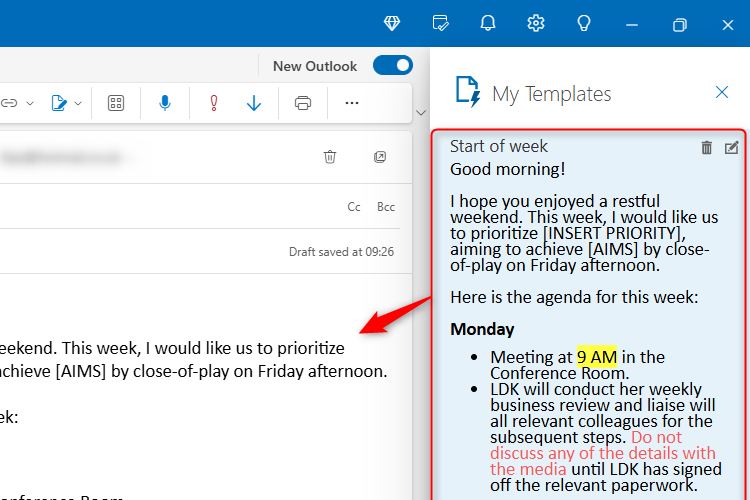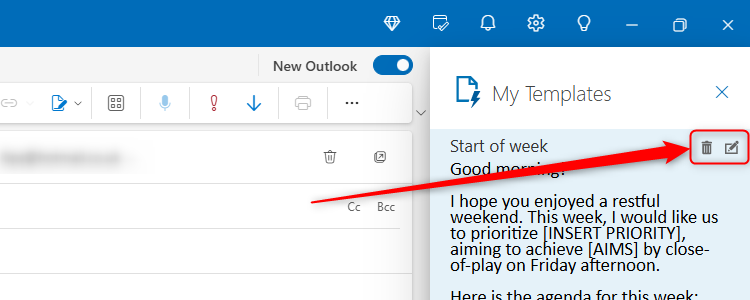Although the new Outlook lacks many tools compared to its predecessor, classic Outlook, one feature that has been carried over is the message template tool. In this quick guide, I’ll show you why it’s best to create your templates using the Message pane, rather than in the My Templates pane.
Why You Shouldn’t Create Templates in the My Templates Pane
I see the My Templates pane purely as a place to store and access my templates, not somewhere where I create the templates themselves.
First, click “New Email” in the Home tab on the ribbon.
Then, click the Apps icon in the Message tab, and click “My Templates.” If you don’t see My Templates as an option, type My Templates in the Find An App search bar.
Now, delete the predefined templates that Microsoft created by default by clicking the trash icon that appears when you hover over them with your cursor. This will clear out the My Templates pane, ready for you to add your own.
At this point, it might be tempting to click “Template,” and create your template in the My Templates pane.
However, stop for a moment!
Before you proceed, bear in mind that when you create a template in the My Templates pane, you won’t be able to add any formatting. Ideally, you want to create templates that are ready to use, which is why you should use the Message pane instead.
Create Your Templates in the Message Pane Instead
Leaving the My Templates pane open, head to the Message pane, and type the message template as you want it to appear when you go to use it later on.
You can use any of the formatting tools in the Message tab on the ribbon, including bullet-pointed lists, line spacing, indentations, strikethrough, text color, and font size—all of which you’re unable to do in the My Templates pane. You can also use Ctrl+K to add a URL link to selected text, or insert an image via the “Pictures” button in the Insert tab.
Once you’ve proofread and edited your email using Microsoft Editor, select (Ctrl+A) and cut (Ctrl+X) the message content. Then, in the My Templates pane, click “Template,” and paste (Ctrl+V) the copied draft into the My Templates message body field. You will see that all your formatting has been retained during this transition.
Give your template a name, and click “Save.”
Don’t confuse the message name with the message subject. The message name is just a template identifier, making it easier to find if you have a long list of templates. Each time you use the template, you’ll still need to insert the email subject in the Message pane.
Finally, because you’ve saved the formatted message in My Templates, you can click the trash icon in the Message pane to discard your draft.
Your template is now ready to use. After launching the My Templates pane via the Apps icon in the Home tab, locate the template you want to use, and click it once to transfer it to the Message pane.
To delete or edit the formatted message template in the My Templates pane, simply hover over the relevant template, and click either the trash icon or the edit icon.
If you’re more familiar with the formatting options in Microsoft Word, you could create your template there instead. Then, copy and paste the draft into the My Templates pane in new Outlook in the same way, and your template will be ready to use when needed.



